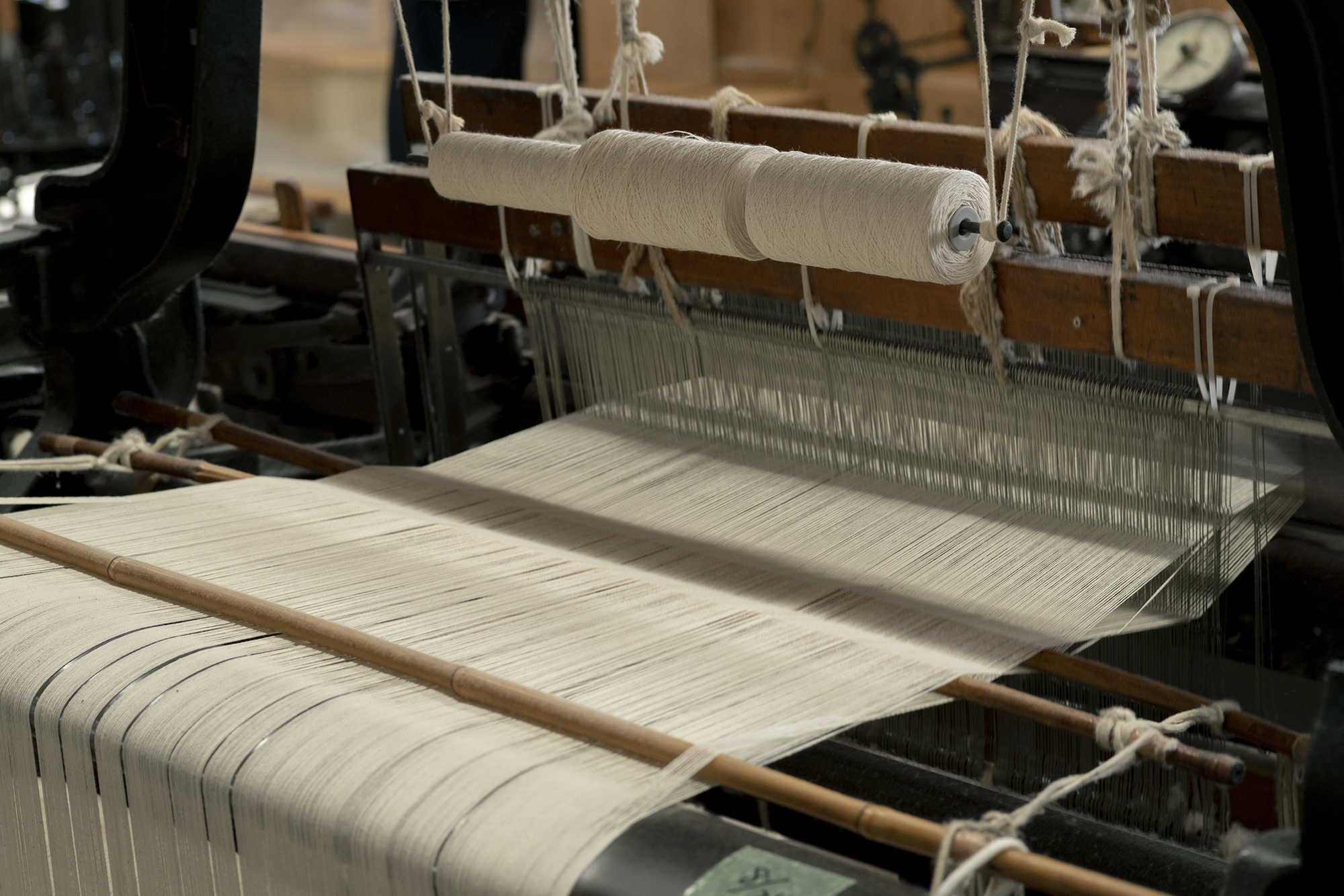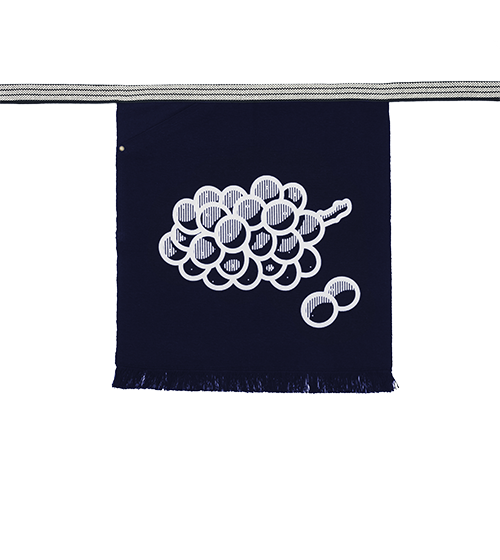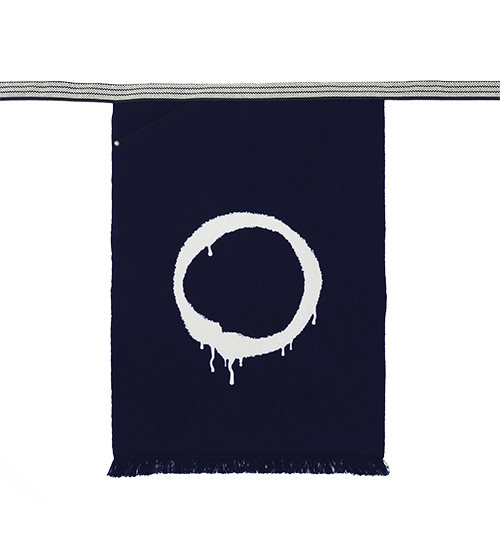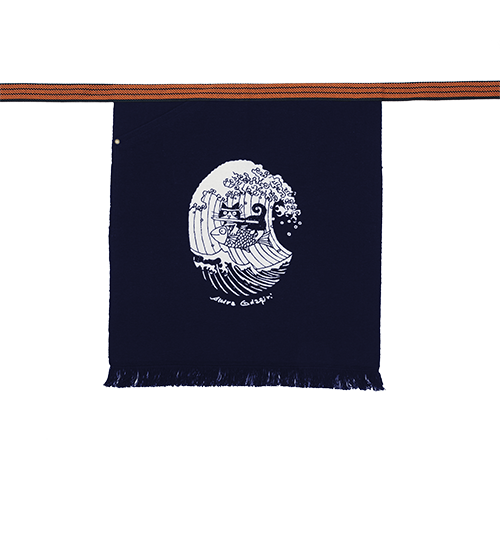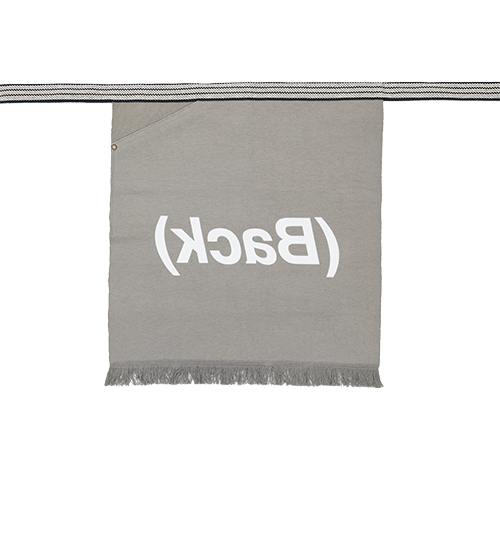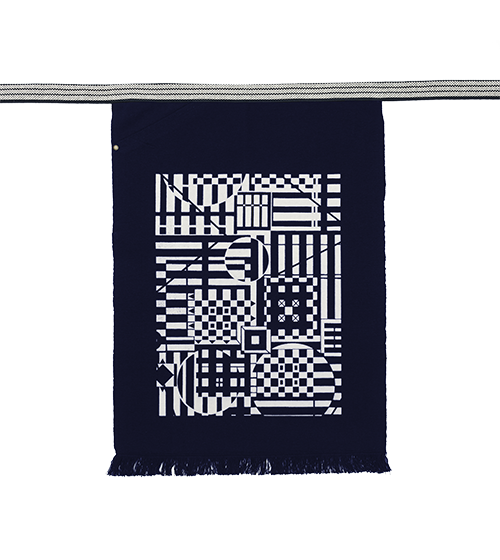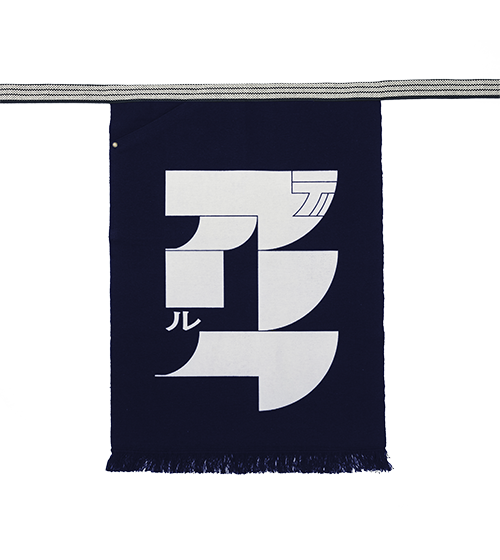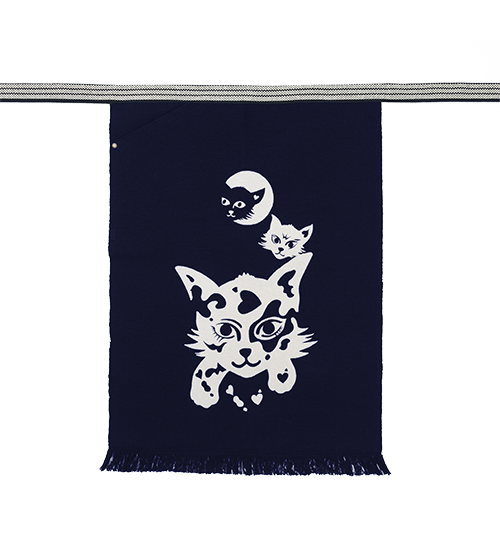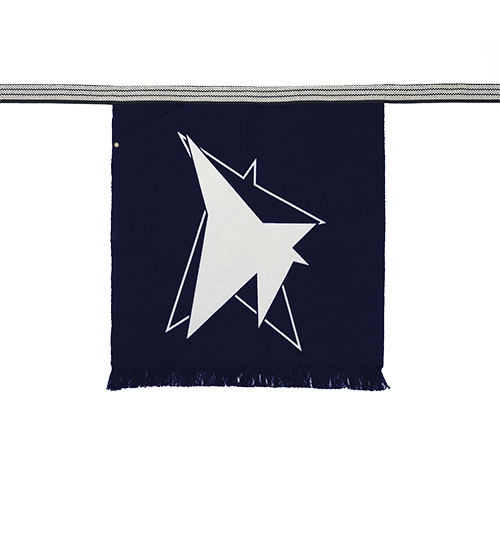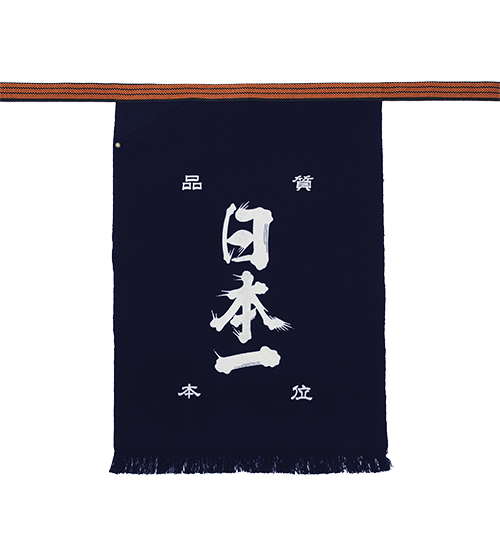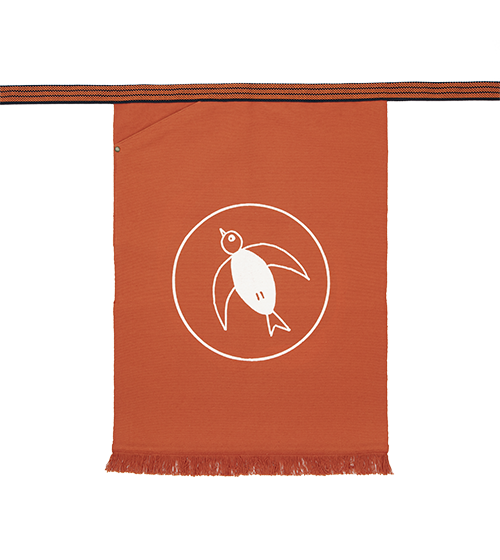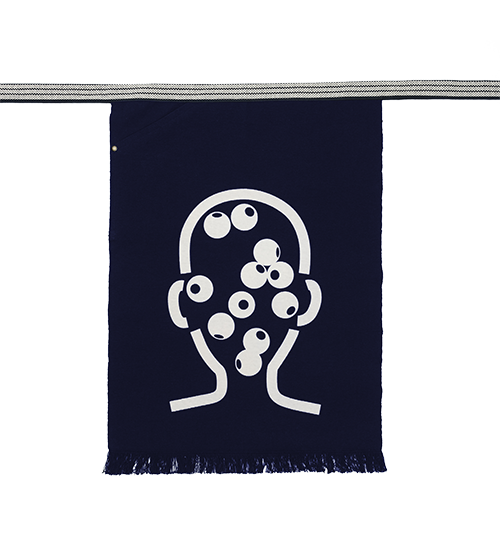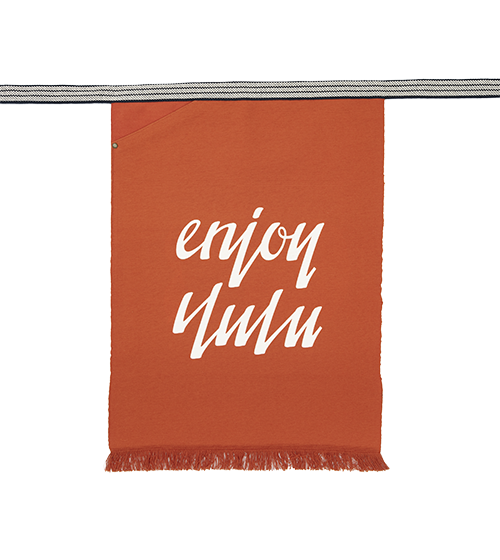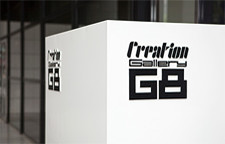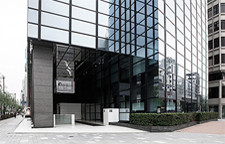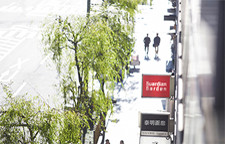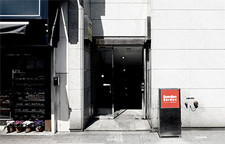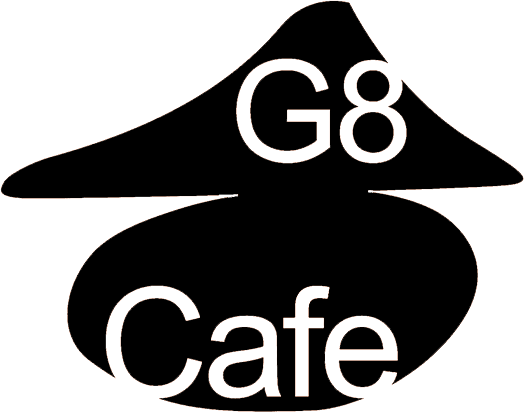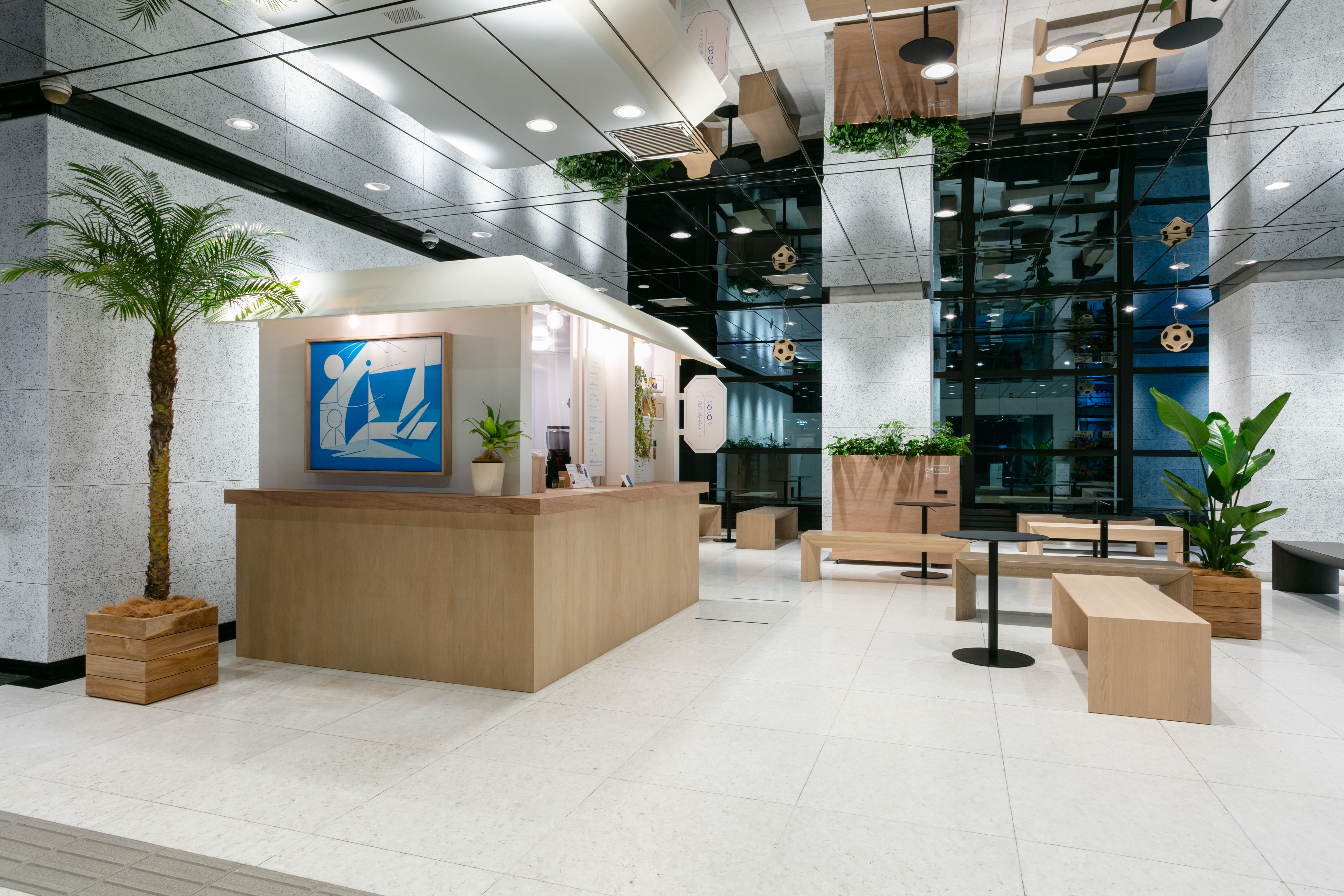Request to Visitors
Visitors to Creation Gallery G8 are requested to make reservations in advance for a specific time slot before coming to the gallery. Visitors arriving without prior reservations will be admitted only if the current time slot has not reached capacity; in these cases, the visitor will be allowed entry by registering the required data on entering. Inside the gallery, all visitors are requested to submit to a temperature check, sanitize their hands, wear a face mask, and maintain a social distance of 2 meters. Persons with any of the following symptoms are requested to refrain from visiting: fever (above 37.5℃), cough, sore throat, general fatigue, etc. Visitors are also requested to take all necessary precautions to protect against infection while en route to the gallery.
For this exhibition, “maekake” (literally, “front-hanging”) aprons featuring original designs by 144 creative artists were specially fabricated from cotton cloth woven and dyed by artisans of Toyohashi City, Aichi Prefecture, using traditional Japanese methods. The cloth was woven on 100-year-old Toyota shuttle looms, resulting in a product blending robust strength with supple beauty – an attractive product made to last 100 years.
Maekake aprons are said to trace their origins as far back as the Muromachi Period, roughly the 14th to 16th centuries, and even today they are often worn by the proprietors of sake and rice shops and the like. They remain a distinctive and immediately recognizable work accessory both practical and beautiful.
Toyohashi has long been known for its maekake production industry. During the period of Japan’s rapid economic development in the 1950s through 1970s, upwards of 10,000 aprons were shipped from Toyohashi every day. During those times, all around Japan it became fashionable for shops vending sake, rice, miso, soy sauce and other traditional items to have their name and logo designed into the front-hanging cloth.
As work apparel, maekake aprons provide the wearer protection in various ways. The tightly fastened waist strap supports the lower back area when carrying heavy items, and when flipped over the shoulder, the apron can function as a protective cushion when transporting weighty goods packed in wooden boxes, for example. Besides these roles as a practical addition to a work uniform, maekake featuring the shop name and logo dyed into the cloth also serve as effective advertising and publicity media.
Use of maekake isn’t limited to shop workers, however. They are also useful and convenient as outdoor wear when camping or gardening, or as indoor wear ideal for use in the kitchen. Because they can be used in so many different ways – and will last for years and years – maekake make an ideal gift, to yourself and to people important to you.
The exhibition will also feature maekake aprons designed by children in “Creation Kids Lab 2021,” an online workshop held in July.
Proceeds from this project are donated to the “Save the Children” charity organization. The funds will be used in Japan to support children in various ways: providing food to families economically impacted by the COVID-19 pandemic, helping to relieve child poverty, taking action to prevent child abuse, etc. Every purchase translates to active participation in this worthy charity program.
Purchase Price
¥6,500 (tax included) per apron
Online Purchase
Made-to-order reproductions of the items on exhibit will be available for online purchase, through the website indicated below, from December 9, 2021 through January 22, 2022. Items will be shipped in late March.
URL: https://store.ponparemall.com/rcc-gallery/ (Japanese language only)
Allocation of Proceeds
Proceeds from this event (after production costs) will be donated to the “Save the Children” charity organization. The funds will be used in Japan to support children in various ways: providing food to families adversely impacted by the COVID-19 pandemic, helping to relieve child poverty, taking action to prevent child abuse, etc.
Organizers and Venues
Creation Gallery G8
Recruit Ginza8 Bldg., 1F, 8-4-17 Ginza, Chuo-ku, Tokyo 104-8001
TEL: 03-6835-2260
Guardian Garden
Hulic Ginza 7-chome Bldg., B1F, 7-3-5 Ginza, Chuo-ku, Tokyo 104-8227
TEL: 03-5568-8818
Apron Production
Anything Co., Ltd.
Advertising Art
Seri Tanaka
Advertising Art
Seri Tanaka
Photography
Yuki Moriya: apron production process,Kohei Yamamoto: apron dyeing and workshop (Creation Kids Lab),Ryuta Nasu: aprons
Exhibition Layout
Takashi Nakahara
Maekake Apron Data
Material: 100% cotton
Two sizes (approx.): Short W47 x H52 cm / Long W47 x H67 cm.
Height includes waist strap and bottom fringe.
Dyeing method: Resist dyeing (design realized by applying/removing glue)
Pocket provided on right side. Vermilion & white waist strap (length: approx. 260 cm).
(Note: Finished products may vary slightly as each item is handcrafted.)
Creation Project
Creation Project is a series of annual exhibitions launched in 1990 as a charity event that conveys the fun and enjoyment of art and design to a large number of people, and also gives children an understanding of the value and appeal of Japanese craftsmanship and design. Each year works created on a noncommercial basis by artists with links to the two galleries are displayed and offered for sale, and the proceeds are donated to various charity causes. The name “Creation Project” was adopted in 2009. From 2011 through 2015, the project was conducted to support recovery from the Great East Japan Earthquake and tsunami disaster of March 2011, generating donations totaling approximately ¥11.34 million. By focusing on the area’s local artisans and their supreme craftsmanship, the project provided a significant boost to local industries. In 2016 a donation in the amount of ¥1.58 million was made in support of recovery from that year’s series of severe earthquakes in the Kumamoto region. Since 2017 the scope of production bases for the featured items has been expanded nationwide, and the project serves to demonstrate, through the power of design, Japan’s traditional craftsmanship and industrial capabilities. Under this format, between 2017 and 2020 a total of ¥3.13 million was donated to the “Save the Children” charity organization.
Creation Project 2011: Tote Bags Made in East Japan
Creation Project 2012: EAST ALOHA
Creation Project 2013: Little Handbags from Ishinomaki
Creation Project 2014: Japanese-style Notebooks from Tohoku
Creation Project 2015: Date Knitting
Creation Project 2016: Indigo Cups
Creation Project 2017: Tube Socks
Creation Project 2018: Small Oborisoma-ware Plates
Creation Project 2019: Furoshiki Kaleidoscope
Creation Project 2020:Masu Boxes

